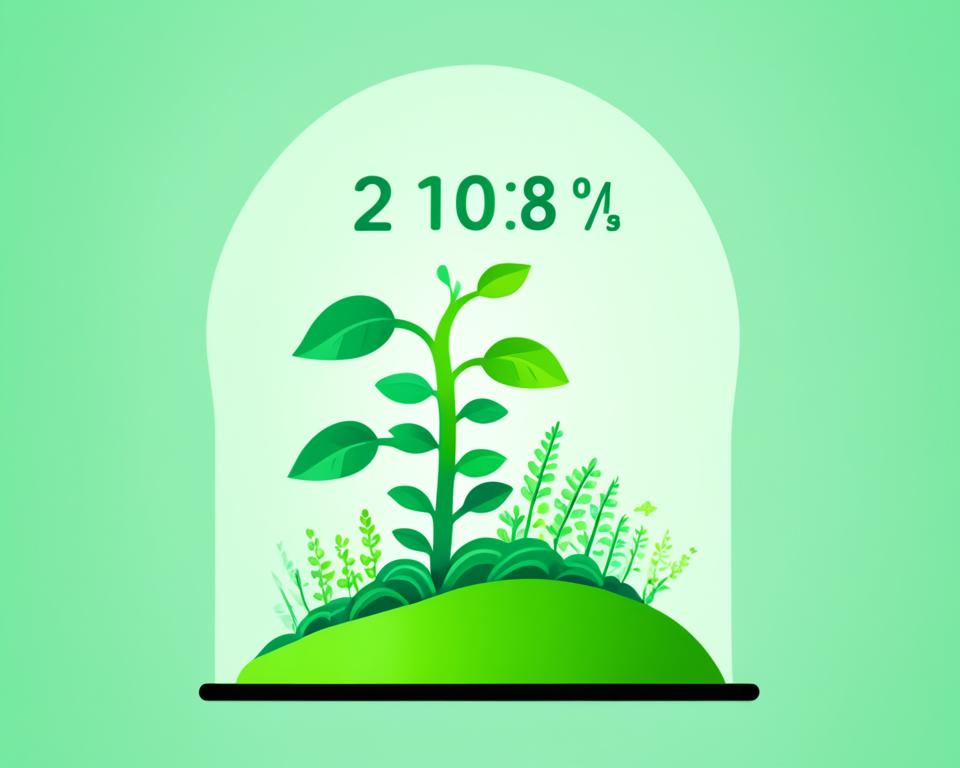Understanding the Importance of Credit Utilization
Credit utilization is a crucial aspect of managing your credit effectively. Essentially, credit utilization refers to the percentage of your available credit that you actually utilize.
This ratio is an important factor that credit agencies consider when calculating your credit score.
Maintaining a low credit utilization ratio is vital as it demonstrates responsible credit management and financial discipline. A low utilization ratio indicates that you are not heavily reliant on credit and are able to manage your debts effectively. On the other hand, a high credit utilization ratio suggests that you are utilizing a significant portion of your available credit, which can be seen as a potential risk by lenders. Understanding and managing your credit utilization is essential for building and maintaining a healthy credit profile.
Analyzing the Impact of High Credit Utilization on Your Credit Score
High credit utilization can have a significant impact on your credit score. When you consistently use a large percentage of your available credit, it may signal to lenders that you are relying too heavily on credit and could potentially be at risk for defaulting on your payments. This can result in a lower credit score, making it more difficult for you to obtain future credit or secure favorable loan terms.
One of the key factors that credit scoring models consider is the credit utilization ratio, which is the percentage of your total available credit that you are currently using. Generally, it is recommended to keep your credit utilization ratio below 30%. However, if your credit utilization exceeds this threshold, it can negatively affect your credit score. Lenders may view high credit utilization as an indicator of financial instability or poor money management skills, which can lead to a lower credit score. Therefore, it is essential to monitor your credit utilization and take steps to keep it within a healthy range.
The impact of high credit utilization on your credit score can be significant, but there are strategies you can employ to mitigate its effects. By understanding the importance of credit utilization and implementing responsible financial habits, you can improve your credit score over time. It is crucial to explore alternative financing options, such as reducing reliance on credit cards and seeking other forms of financing when possible. Monitoring your credit utilization ratio regularly and making adjustments as needed will help you maintain a healthy credit score in the long term.
Determining Your Available Credit and Calculating the Optimal Limit
Determining your available credit and calculating the optimal limit is a crucial step in understanding and managing your credit utilization. Available credit refers to the total amount of credit that you have access to on your credit accounts. This includes credit lines on credit cards, loans, and other forms of credit. To determine your available credit, you can review your credit card statements, loan documents, or contact your financial institution for accurate information.
Once you have a clear understanding of your available credit, it is essential to calculate the optimal limit that you should aim for. The optimal limit is the percentage of your available credit that you should ideally utilize to maintain a healthy credit utilization ratio. Generally, financial experts recommend using no more than 30% of your available credit to avoid negatively impacting your credit score. By calculating this optimal limit, you can ensure that you are using your credit responsibly and in a way that will benefit your overall financial health.
Exploring the Relationship Between Credit Utilization and Financial Health
Credit utilization refers to the percentage of available credit that you are currently using. It is a crucial factor that can greatly impact your financial health. When you have a high credit utilization rate, it indicates that you are heavily reliant on credit and are potentially living beyond your means. This can be a red flag for lenders and may negatively affect your credit score.
Maintaining a low credit utilization ratio is essential for your overall financial well-being. By keeping your credit utilization below 30%, you demonstrate that you are using credit responsibly and managing your finances effectively. This not only helps improve your credit score, but also provides you with a safety net in case of unexpected emergencies or financial hardships. It is important to be mindful of your credit utilization and strive to keep it at a healthy level to ensure long-term financial stability.
Identifying the Risks Associated with Exceeding the Recommended Credit Limit
Exceeding the recommended credit limit can have significant risks and consequences for individuals. One of the primary risks is the negative impact on your credit score. When your credit utilization ratio, which is the percentage of your available credit that you are using, exceeds the recommended limit, it can signal to lenders that you are relying too heavily on credit. This can result in a lower credit score, as lenders may perceive you as a higher credit risk.
Moreover, going over the recommended credit limit can lead to financial burdens and debt. By maxing out your credit cards or exceeding your credit limits, you may find yourself struggling to make minimum monthly payments or incurring high interest charges. This can create a cycle of debt that becomes increasingly difficult to escape. Additionally, exceeding your credit limit may also result in penalty fees from the credit card issuer, further adding to your financial burden. It is crucial to be aware of these risks and take appropriate measures to maintain a healthy credit utilization ratio.
Strategies for Decreasing Credit Utilization and Improving Your Credit Score
To decrease credit utilization and improve your credit score, it is essential to start by paying down existing balances. Begin by focusing on high-interest debt before tackling other outstanding balances. Paying more than the minimum payment each month can help reduce overall debt and lower credit utilization.
Another strategy is to negotiate with lenders for a lower interest rate on your existing credit cards. A reduced interest rate can make it easier to pay off debt quicker and decrease credit utilization. Additionally, consolidating multiple credit card balances into a single loan with a lower interest rate can simplify payments and decrease overall credit utilization. However, be cautious when considering balance transfers, as they may come with fees and can negatively impact your credit score if not managed properly.
Implementing Effective Budgeting Techniques to Control Credit Usage
One of the most important steps in controlling credit usage is by implementing effective budgeting techniques. Creating a monthly budget allows you to allocate your income towards necessary expenses and helps you identify areas where you may be overspending. By tracking your expenses and income, you can better understand your financial situation and make informed decisions about your credit usage. This can help you avoid relying on credit cards or loans for everyday expenses and ensure that you are living within your means.
When creating a budget, start by listing all your sources of income and your fixed expenses, such as rent or mortgage payments, utilities, and loan payments. Then, allocate a portion of your remaining income towards variable expenses, such as groceries, transportation, and entertainment. It’s important to be realistic about your spending habits and make adjustments as needed. By keeping a close eye on your budget and regularly reviewing it, you’ll be able to identify areas where you can cut back on expenses and put more money towards debt repayment or saving. With effective budgeting techniques in place, you’ll have more control over your credit usage and can work towards financial stability.
Exploring Alternative Financing Options to Reduce Reliance on Credit
For individuals looking to reduce their reliance on credit, exploring alternative financing options can be a viable solution. One option is to seek out personal loans or installment loans from banks or credit unions. These types of loans typically have lower interest rates compared to credit cards, making them a more affordable way to borrow money. Additionally, personal loans often have fixed repayment terms, allowing borrowers to create a structured repayment plan and avoid the cycle of revolving debt.
Another alternative financing option is to consider peer-to-peer lending platforms. These online platforms connect borrowers directly with individual lenders, cutting out the traditional financial institutions. Peer-to-peer lending can offer lower interest rates than traditional lenders, as borrowers are able to negotiate terms directly with lenders. Moreover, peer-to-peer lending can provide greater flexibility in loan terms and repayment schedules, catering to individual financial needs. By diversifying their borrowing options, individuals can reduce their reliance on credit cards and potentially save money on interest payments.
Monitoring Your Credit Utilization Ratio and Making Adjustments as Needed
Monitoring your credit utilization ratio and making adjustments as needed is a crucial aspect of maintaining a healthy credit score. By regularly monitoring your credit utilization ratio, you can ensure that you are using your available credit responsibly and within recommended limits. This ratio is calculated by dividing your total credit card balances by your total credit limits, and it plays a significant role in determining your creditworthiness.
To effectively monitor your credit utilization ratio, it is important to be aware of your credit card balances and credit limits. Keeping track of your balances and limits allows you to assess your current credit utilization ratio and make any necessary adjustments. By regularly reviewing your credit card statements and monitoring your spending habits, you can identify any areas where you may be exceeding the recommended credit limit. Making adjustments, such as reducing unnecessary expenses or paying off outstanding balances, can help you maintain a healthy credit utilization ratio and improve your overall financial well-being.
Tips for Maintaining a Healthy Credit Utilization Ratio Over the Long Term
One key tip for maintaining a healthy credit utilization ratio over the long term is to regularly monitor your credit card balances and credit limits. By keeping a close eye on your usage, you can ensure that you are not maxing out your credit cards or exceeding the recommended utilization ratio. This can help prevent any sudden spikes in your credit utilization and maintain a consistent ratio.
Another important strategy is to pay off your credit card balances in full and on time each month. By doing so, you can avoid accruing any unnecessary interest charges and keep your credit utilization low. Making timely payments shows lenders that you are responsible and reliable, which can positively impact your credit score. Additionally, paying off your balances in full can help you avoid accumulating too much debt and keep your credit utilization ratio in check.




